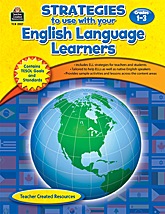 I suppose one way to get a “crash course” in teaching English Language Learners is to go to them. I had just that opportunity last year, when I traveled to Slovakia to teach English for two weeks. Check out TEFL teaching in Thailand if you’re interested in a similar opportunity. In our classes we had students of all ages, at all stages in their process of learning English. I was privileged to work a week with the beginning class, and then a week with the advanced class. Our task, as much as teaching the students English, was to engage them, motivate them to come to class each day, and encourage them to speak only English in class – a tough challenge when we were in their country, and they could—and would—speak their native language as soon as they stepped outside the classroom. I was surprised to find the same basic principles of ELL instruction I had learned in an American class on how to teach ELL students put into practice in another country.
I suppose one way to get a “crash course” in teaching English Language Learners is to go to them. I had just that opportunity last year, when I traveled to Slovakia to teach English for two weeks. Check out TEFL teaching in Thailand if you’re interested in a similar opportunity. In our classes we had students of all ages, at all stages in their process of learning English. I was privileged to work a week with the beginning class, and then a week with the advanced class. Our task, as much as teaching the students English, was to engage them, motivate them to come to class each day, and encourage them to speak only English in class – a tough challenge when we were in their country, and they could—and would—speak their native language as soon as they stepped outside the classroom. I was surprised to find the same basic principles of ELL instruction I had learned in an American class on how to teach ELL students put into practice in another country.
Build Background Knowledge
- Get students talking with simple sentence frames:
I am _____.
I have _____.
I like _____.
Everyone likes to talk about themselves. Have students use pictures to help them describe themselves, their pets, families, favorite foods, places, etc.
- Allow students to use translation resources, such as picture dictionaries, for introductory activities.
- Students need to know how to say the letters in English to help them spell and learn new words – a spelling bee or a game of hangman is a great way to have students practice their pronunciation.
- Teach students simple questions they can use to help in their process of learning English.
How do you say that?
What is that word?
Please speak more slowly.
Will you repeat that, please?
Use Comprehensible Instruction
- Create word charts to help students distinguish between verb tenses.
- Use different colors to add a new concept to something students already know, for example, to add contractions after students have learned a pronoun-verb structure.
- Use gestures in a listening exercise to help students distinguish between sounds in two columns of a word chart.
- Introduce new words or concepts before doing dictation.
Encourage Active Participation
- Have students dramatize feeling words.
- Have students learn the meaning of prepositions by using objects to act out each word.
- Have students practice asking and answering questions: Place a variety of items in a small bag or backpack. Have students take turns selecting an item and hiding it from view. Classmates will ask questions to guess the hidden item. Vary the types of questions and answers required based on students’ English proficiency level (yes/no questions for beginners, questions that provide a word choice for intermediate students, etc.).
- Invite students to teach words in their language – they will have to practice their English to teach others.
These classes were offered during the summer. One characteristic that stands out in my mind is that it didn’t feel like school, even though we were in classrooms from 9 to 3 every day (with a lunch break). We engaged the students in conversation, maintained the pace with games, activities, and movement, and spent most of the time working with students in small groups, a good summary to remember the next time I work with ELL students!
Tracie Heskett has taught multiple grades in public and private elementary schools in southwest Washington. She currently writes teacher resource materials and curriculum. She has authored many books for Teacher Created Resources including Blogging in the Classroom, Going Green, and Traits of Good Writing. Her most recent series Strategies to use with Your English Language Learners and Math Strategies to use with Your English Language Learners were released in May 2012.
